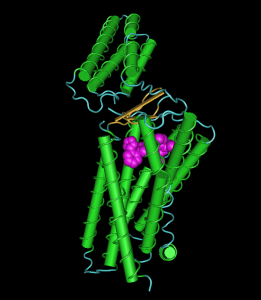It has been a long standing mystery how the start of puberty is initiated. Fact is that menarche, the begin of active reproduction capacity is preceded by and a consequence of the adrenarche, the begin of androgen production in the adrenal gland. Puberty is characterized by the beginning of sporadic gonadotropin releasing hormone (GnRH) pulses which in time become regular and finally acquire their one-in-two hour rhythm at the end of puberty.
A report in the Journal of Molecular Endocrinology by Abreu and colleagues from Boston and Sao Paulo has uncovered that the Makorin ring finger 3 (MKRN3) gene is mutated in cases of central precocious puberty (CPP) . CPP is diagnosed when the children enter into puberty much to early for their age. They analyzed the protein in more detail then and found the decline of MKRN3 expression in the arcuate nucleus (area of the hypothalamus to control GnRH secretion) is necessary for the increase of GnRH secretion. Without GnRH puberty can not take place. By which stimulus the decline of MKRN3 is initiated has not been described. It is discussed whether MKRN3 acts directly on GnRH secretion or on kisspeptin, neuromedin B or dynorphin, known mediators of GnRH secretion. It can not act on GnRH expression since the GnRH neurons only reach with their axons into the arcuate nucleus where their release is controlled by other neurons and mediators.
This is a nice paper, adding valuable information to people concerned with the mechanisms of puberty. Recommended!
